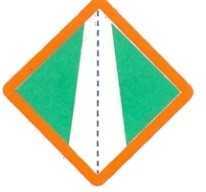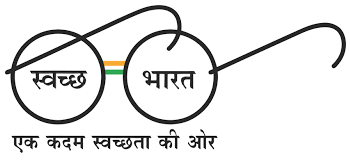- About Us
- PMGSY Guidelines
- Documents
- Operations Manual
- Grameen Sampark
- Core Network
- Standard Bidding Document
- Accounting & Audit Manuals
- Quality Assurance Handbook For Rural Roads Volume-I
- Office Manual
- Quality Assurance Handbook for Rural Roads Volume-II
- Handbook on Maintenance of Rural Roads In India
- Maintenance of Rural Roads: Guidance Note for States
- Annual Action Plan
- Procurement And Contract Management Manual
- Internship Scheme of UPRRDA
- Technical Documents
- Advertisements / Circulars
- Maintenance
- eMARG

- Rural Roads Maintenance Policies Of States
- Brochures on Rural Roads Maintenance
- Training Modules on Rural Roads Maintenance
- Impact Assessment Study of Improved Rural Roads Maintenance
- Strengthening the Capacity of Panchayati Raj Institutions – Managing Maintenance of Rural Roads
- eMARG
- Quality
- Guidelines on action to be taken on the Reports of the National Quality Monitors
- Empanelment of SQM's under UPRRDA
- Guidelines on Quality Assurance and Control Mechanism
- Guidelines on action to be taken on the Reports of the SQM's
- Guidelines on performance evaluation of National Quality Monitors
- Guidelines for Performance Evaluation of SQM
- SQM Inspection format- Maintenance works
- SQM Guidelines and Format
- Checklist For visit of area officers
- SQM Inspection Report Format
- De-empanelment of State Quality Monitors (SQMs)
- List of SQM’s (State Quality Monitors)
- List of SQC’s
- List of SQM Emeritus
- Training/Meeting
- iGOT Presentations

- 1. Advance Programme-Planning Design _Construction of Long Span Bridges-(Batch I)-22

- Prof M R Madav-Advanced Concept in the Geotechnical
- Pro MR Madav-Considerations in Design of BridgesN
- Shri Arvind Kumar Jaiswal-Seismic Effects on Performance of Long Span Bridges(1)
- Shri S Sai BABA-Sustainable design of long span Bridge
- Shri P G Venkat Ram Bridge Construction method and the failures Associated Method and the failures associated with them
- Sri P G Venkat Ram - Quality control measures that can prevent Bridge failures
- Shri S Sai Baba - Innovative launching
- 2. CONSTRUCTION AND QUALITY CONTROL OF FLEXIBLE AND RIGID PAVEMENTS

- L01- CSRK_PMGSY_T2022P3_QAQ 2122030341
- L02-Construction and Quality control of Subgrade and Granular layers
- L03- PMGSY_QC_55_03032022
- L04-GRK_Testing Cement Cement Concrete
- L05-PMGSY Soil properties
- L06- PMGSY_SS_Roughness_04032022
- L07-VR
- L08_VC_LTUB_4MAR2022_1
- L09-VR
- L10- PMGSY_NDT_SS_05032022
- L11_VC_LTMB_5MAR2022
- L12_VC_MMBMD_5MAR2022
- 3. GIS Curriculum for UPRRDA

- 4. New Technologies used in UPRRDA Roads

- FDR
- Lecture 0 Introduction of New Technologies
- Lecture 1-White topping. Short Panel Concrete Pavements and Cell filled concrete pavements
- Lecture 2-Roller compacted concrete pavements and Interlocking concrete block pavements
- Lecture 3- Utilization of waste plastic in Low volume Roads
- Lecture 4-Stabilization Methods for Low Volume Roads
- Lecture 5- Mord Specification for Low Volume Road
- Lecture 6- Design of Flexible Pavements for LVR Reinforced with Geosynthetics
- Lecture 7-Surface Dressing
- Lecture 8-Use of Geosynthetics in Low Volume Roads
- Lecture 9- USE OF MARGINAL MATERIALS IN LOW VOLUME ROADS
- 5. Pavement Design Construction and Maintenance

- 6. Preparation of DPR
- 7. Procurement of services
- 8. Road Safety Audit

- 1. Advance Programme-Planning Design _Construction of Long Span Bridges-(Batch I)-22
- Training Programmes
- Training Modules
- Training Institutions
- List of Trained Engineers & Contractor Staff

- Schedule of Training
- Login And Participation
- List of Certified Road Saftey Auditors
- Meeting
- iGOT Presentations
- Resource Center
- Photo Gallery
- External Links
Core Network
The Core Network is the network of all the Rural Roads that are necessary to provide basic access to all the Habitations. Basic access is defined as single all-weather road connectivity to each Habitation. As already indicated, the effort under the PMGSY is to provide single all-weather road connectivity to each eligible Habitation by way of connecting it to another Habitation having all-weather connectivity or to an all-weather road, in such a way that there is access to, inter alia, Market Centres.
A Core Network is extracted out of the total Network mentioned in the DRRP and consists of existing roads as well as the roads required to be constructed to the as yet unconnected Habitations. However, it will not consist of all the existing roads of the DRRP since the objective is to establish ‘basic access’ i.e., one all-weather road connectivity to each habitation.
The Core Network has the following advantages.
- It will help in optimising the requirements of fresh construction and upgradation, for ensuring connectivity to all the Habitations.
- It is primarily intended to mark out the essential network that is required to be maintained in good condition at all times.
- It would optimise the resource allocation in respect of the maintenance activity within the District.
The preparation of the Block Maps, using topographical Maps at 1:50, 000 scale, has already been explained in Operational Manual at Para 3.1.7 for preparation of the District Rural Roads Plan. It may be ensured that the Block Maps show the following:
- All Habitations upto a population of 100
- All roads viz., NH, SH, MDR, and Rural Roads, constructed by different agencies including the roads under construction as well as cart tracks and paths (in hilly areas especially)
- Major rivers/streams
- Administrative office location like Block & Tehsil headquarters
- Gram Panchayat Headquarters, Patwari office etc
- Health Service facilities (including veterinary facilities)
- Educational Service Facilities
- Market Centres and Rural business hubs
- Places notified by State govt. as being of tourist interest
- Quarry Sites
- Market Centres, Administrative Centres like sub divisional headquarters and main roads which are outside the Block boundary but serve the Habitations in the Block must also be marked, outside the Block boundary
Before preparing the Core Network, one needs to identify all the Market Centres in the Block. This is because an analysis of the transport patterns in the rural areas reveals that most of the travel is to the Market centres. These are generally located either on bigger roads or at the confluence of roads leading from a number of Habitations. Because they are easily accessible from the rural hinterland and are linked to the main road network, they function as Rural Business Hubs and generally have facilities for marketing of agricultural surpluses, Banking and telecommunication facilities, large stores for agricultural inputs as well as consumer items (durables and consumables). Facilities like agricultural equipment repair shops may also exist. Consequently they are likely to have developed public transport, Higher Education and Health care facilities. The Market Centres should be identified using the data available from published Census records/information available from Marketing Board/ local enquiries. For purposes of inclusion in the Core Network, market centres need to be identified to the extent that the local villagers should be able to go to the Market centre and come back within the same day. The maximum distance between a village and a Market centre would thus normally not be more than 15-20 km. In some areas, the Market centres may not be fully developed. In such cases the big villages having potential for developing into suitable Market Centres because of road connectivity etc should be identified. All the Marketing Centres should be marked on the Block Map.
There are three types of habitations in the Block Map – those which are connected, having all-weather roads, (ii) those which are not connected at all, (iii) those which are connected only by a fair-weather road. In the case of connected Habitations, it is possible that there are more than one road connections. In such a case, one road should be selected using Socio- Economic infrastructural parameter criteria. If, for any reason, an alternative road is the preferred choice of the local people, that road may be chosen, but, in any case, only one road should be selected for the Core Network, as the intention is to provide Basic access. In case of unconnected habitations, a suitable road connection should be identified, which would generally follow the alignment of an existing track. Quite often an unconnected habitation can be connected in more than one way. Often the market centre is in a different direction from say, the taluka headquarters. In case a consensus is not easily reached the choice from various alternative links may need to be made on the basis of weightages accorded to different socio-economic services. Since PMGSY envisages only single connectivity, it is necessary to choose the most efficient road link in terms of utility.
The Core Network Plan shall thus be prepared for the entire Block. It should be checked again that all the Habitations are connected or will be connected to the nearby Market Centres, either directly or indirectly through other all-weather roads. It is not necessary that each Habitation is directly connected to the Market centre in a hub-and-spoke configuration.
Going by the definition of an all-weather road as given in Chapter-1 Operation Manual, it is not necessary to provide a road to a Habitation that is within 500 metres of an already connected habitation or an all-weather road. All such habitations should be treated as falling on the concerned road.
Suggestions/ proposals received from elected representatives including MLAs and MPs, Panchayats, and local population must be properly examined as these can provide very useful information about the missing bridges, missing links and other priority demands of the local community. The existing road Network, location of major Market Centres, topographical features, and local travel pattern should be kept in mind. While deciding the Core Network, the fact that it will be used primarily by the local people must be uppermost in the mind.
Once the Core Network is identified, the details of all these roads should be listed in the Proformae CN 1 to CN 6. The Proforma are given at Annexure -1
The data in the Proforma should be uploaded or entered in the DRRP Module of the Online Management, Monitoring and Accounting System(OMMAS). For purpose of numbering, it is always better to start with the North-East corner of the Block and workout clock-wise giving progressively higher numbers.
20. In some areas, even the Network of higher roads like Major District Roads (MDR) and State Highways (SH) may not be fully developed. Many of the major bridges may be missing. The investment in Rural Roads will not show expected results unless these major roads and bridges are constructed. The requirements of such roads and bridges may be identified even though these are not to be included under the Pradhan Mantri Gram Sadak Yojana. Such information should be provided to PWD to incorporate these in their plans.











